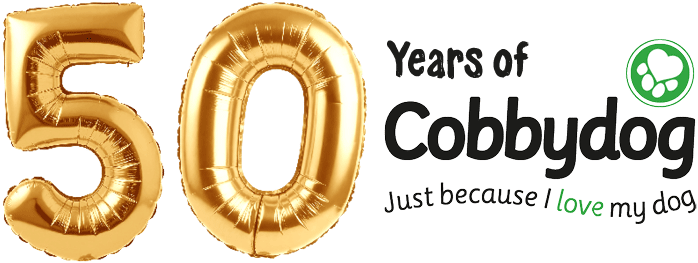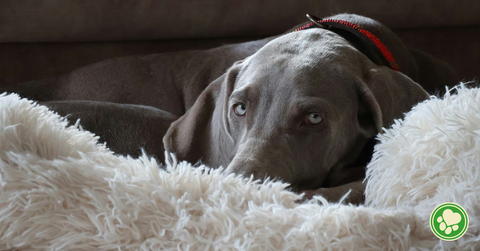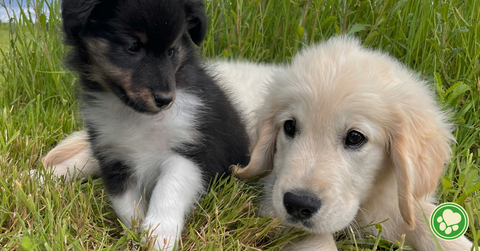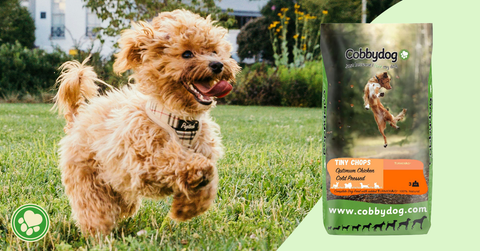The dogs of Euro 2020 - Who would win?
23 . June .2021Adam Copland0 Comments
With the Euros now well underway, we thought the best way for Cobbydog to get amongst the action was by bringing you our guide to Euro 2020….and their dogs.
That is right! We are bringing you a dog breed that is either popular or native to the nation for each of the countries competing at the Euros.
See below for the group tables and information on the selected breed for each country.
Let us know who you think would win Euro Dog 2020 (in 2021)!
Group A:
Turkey - Anatolian Shepherd Dog
The Anatolian Shepherd is a large guardian dog that is a descendant of one of the oldest dog breeds on earth. Anatolian Shepherds are labelled as the ultimate guardian breed due to their extremely loyal to their families. They will even guard the family cat!
Italy - Pastore Bergamasco (Bergamasco Shepherd)
The Pastore Bergamasco was initially used for herding and is still used for the role in the Italian and Swiss Alps. The breed faced extinction in the 1950s because the need for wool declined after World War II. An Italian breed made efforts to save the species, but it is still rare, with only an estimated 600 Bergamasco dogs worldwide.
Wales - Pembroke Welsh Corgi
Pembroke Corgis are known as an energetic breed that can make them excellent sports competitors. However, they can be wary of strangers and are sometimes territorial. Their popularity has been put down to Queen Elizabeth II being an enthusiast of the breed.
Switzerland - Appenzeller Sennenhund
The Appenzeller Sennenhund is one of the four regional breeds of Sennenhund-type dogs from the Swiss Alps. The name Sennenhund refers to people called Senn, who are herders in the Appenzell region of Switzerland. The Appenzeller Sennenhund are primarily companion dogs but have been proven to excel in agility/flyball competitions.
Group B:
Denmark - Broholmer
The Broholmer has reportedly been around since medieval times where it was used in the hunt for boars. The breed almost went extinct after the Second World War, but passionate fans of the breed and a group of people Danish Kennel Club began working together to rebuild the breed.
Finland - The Finnish Hound (Suomenajokoira)
The Finnish Hound is primarily used for hunting hares or foxes. The breed’s development is said to have started due to hunting enthusiasts Suomen Kennelklubi, which was a precursor of the Finnish Kennel Club. The Finnish Hound is well-established in Scandinavian countries but is still rare elsewhere in the world.
Belgium - Belgian Shepherd Groenendael
There are actually four varieties of Belgian Shepherd Dog, the Groenendael, Tervueren, Malinois and Laekenois, all of which are named after the areas in Belgium. The Groenendael is known as an affectionate and devoted companion. They want to join in with everything.
Russia - Samoyed
The Samoyed was known as a reindeer herder and carting dog. It was developed by the Samoyedic people of Siberia. Studies have revealed the Samoyed is one of the most ancient dog breeds.
Group C:
Netherlands - Keeshond
The Keeshond is believed to descend from German Wolfspitz and is the national breed of the Netherlands. The breed was used to guard on barges, giving it the nickname of the Dutch barge dog.
Ukraine- Ukrainian Shepherd Dog
The Ukrainian Shepherd Dog is also known as the South Russian Ovcharka or South Russian Sheepdog. The breed originates from the Ukrainian steppes between the Black Sea and the Sea of Azov. This is an undemanding dog, which can adapt to most weather conditions due to its woolly coat.
Austria - Alpine Dachsbracke
The Alpine Dachsbracke is a small dog know for its short legs, which are designed for hunting game over rough terrain at high altitudes. They have a very dense double coat that is usually in dark rust or red with black.
North Macedonia - Sarplaninac
Sarplaninac is a symbol of national pride for the country, with the 1 Denar coin (North Macedonian currency) featuring the breed. With its thick fur, the breed has long been a guardian of livestock in the Šar Mountains.
Group D:
England - Yorkshire Terrier
The Yorkshire Terrier was developed by crossing the Skye Terrier with the Manchester Terrier and the Dandie Dinmont Terrier. The breed’s original use was to hunt mice and rats in both mines and mills of Yorkshire. However, it later became a fashionable companion dog.
Croatia - Dalmatian
The Dalmatian is the most famous of all the original Croatia dog breeds. They are very loyal breeds and friendly but can be standoffish with strangers. They have a long association with firefighting because they get on with the horses that used to pull fire trucks.
Scotland - Dandie Dinmont Terrier
The Dandie Dinmont Terrier is assumed to descend from the crossbreeding between local Terriers and Dachshund. The breed was first registered in 1700 and became well-known thanks to author Walter Scott, whose main hero in the novel Guy Mannering was called Dandie Dinmont and was surrounded by six of the breed.
Czech Republic - Cesky Fousek
The Cesky Fousek was close to extinction after World War I but was regenerated in 1930 with blood from the German Shorthaired Pointer. The breed is known as intelligent, dynamic, hardworking, understanding and, affectionate, watchful dog.
Group E:
Spain - Podenco Canario
The Podenco Canario is also known as the Canary Island hound. The breed was traditionally used for rabbit hunting due to its excellent sense of smell, vision and hearing. The Podenco is recognizable by its pointy ears.
Sweden - Västgötaspets (Swedish Vallhund)
The Västgötaspets is a playful small dog with a high level of intelligence. These dogs do have a tendency to bark, but they are also calm and adaptable. They also love their owners and follow them as much as they can.
Poland - Owczarek Podhalanski (Polish Tatra Sheepdog)
Owczarek Podhalanski is labelled a sheepdog due to its characteristics but doesn’t really resemble a typical sheepdog at all. The breed has long been working in the Polish Mountains and is thought to have originated in the region of Podhale in Southern Poland.
Slovakia - Slovak Rough-Haired Pointer
The Slovak Rough-Haired Pointer is highly versatile with the ability to point, retrieve, and track game animals both large and small. It is a lean and muscular hunting dog that can hunt in a wide variety of terrains.
Group F:
Hungary - Puli
The Puli is one of the nine native Hungarian dog breeds and is among the best-known herding dogs worldwide. The Puli is the most intelligent Hungarian herding dog, with a fully-trained one being able to not only understand his owner’s words but his gestures and eyes signalling.
Portugal - Estrela Mountain Dog
The Estrela Mountain Dog is one of Portugal’s oldest native dog breeds. Its thick coat keeps the breed warm in the high elevation climate. They are known to be a formidable opponent for any wildlife or intruders to homes and properties it guards. However, they also have docile nature when with the owner and their family.
France - Papillon
The Papillon’s name comes from the French word for butterfly. It is a small dog with a big personality and also known as the Continental Toy Spaniel. Despite their stature, Papillons love to exercise and are a pretty active dog. The Papillon has been bred to be the ultimate companion.
Germany - Great Dane
It is thought the Great Dane is from Denmark, but the gentle giants are actually German. The Great Danes are the world's largest dog breed. The breed is people-oriented and is easy to housetrain, despite its size.









